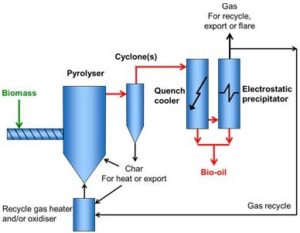Fossil Fuel Replacement?

Carbon dioxide is the main reason for the greenhouse effect, which occurs when Earth gases absorb heat that would ordinarily radiate out into space. Fossil fuels release carbon dioxide, one of the gases that retain heat, causing above average temperatures and now global warming. If their use persists, the physical, ecological, and social impacts could be irreversible.
The danger that fossil fuels pose to our Earth’s future is clear, but what isn’t clear is the solution. Some suggest more wind, solar, and hydroelectric power. Others who think outside of the box and inside the grinder suggest cannabis.
Because cannabis can be cultivated, it, unlike fossil fuels, won’t run out anytime soon; plus it’s one of the most reliable options to meet our energy needs. Not only could it produce the energy needed to survive, it’s also a clean, cheap and renewable power source.
How It Works

Cannabis’ biomass, the amount of material a plant can convert into fuel, is about 146 billion tons a year. This is a huge development as up to 90% of the energy that comes from fossil fuels could be replaced with biomass from cannabis.
Pyrolysis, the process (pictured above) used to convert cannabis’ organic plant material into fuel, chemically decomposes organic materials using high temperatures without oxygen. It handles the production of gasses, methanol, charcoal and other fossil fuels.
The Results
What’s even more promising is that the biomass converted into fuel doesn’t produce any dangerous byproducts and pollution is non-existent. Without the toxins created by carbon fossil fuels emitted into the atmosphere, it’s believed that the greenhouse effect could be significantly reversed and help fight global warming.
The use of other pollution-causing fossil fuels such as crude oil, natural gas and coal could also be eliminated by switching to cannabis energy. Dangerous side effects like acid rain, smog (we’re looking at you, L.A.) and ozone deterioration could begin to stop. Not only will it clean our atmosphere and stifle pollution, but it’ll also lend a helping hand to the legalization of medical cannabis for patients who need it.
With global warming, a (debatable) foregone conclusion, fuel produced from cannabis biomass could become the future energy that solves all our needs while saving the planet in the process. If its current stigma can be removed by bettering the environment, maybe cannabis can finally be deemed useful to improve several other issues, and lives, as well.



